
NSAM 273
National Security Action Memorandum Number 273 – Part One: “The DRAFT”
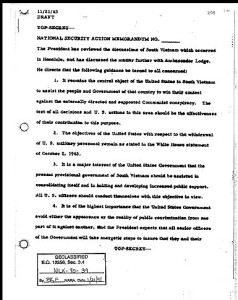
There are several smoking guns, but the one that initially stands out as the most obvious is the date of the DRAFT, which was subsequently signed by McGeorge Bundy, Special Assistant to the President for National Security. The DRAFT was written and dated November 21st, 1963 less than 24 hours before the assassination. It was ostensibly the result of the meetings that took place the previous day at the Honolulu Conference. The text of the DRAFT of NSAM 273:
11/21/63
DRAFT
TOP SECRET
NATIONAL SECURITY ACTION MEMORANDUM NO. __________
The President has reviewed the discussions of South Vietnam which occurred in Honolulu, and has discussed the matter further with Ambassador Lodge. He directs that the following guidance be issued to all concerned:
1. It remains the central object of the United States in South Vietnam to assist the people and Government of that country to win their contest against the externally directed and supported Communist conspiracy. The test of all decisions and U.S. actions in this area should be the effectiveness of their contribution to this purpose.
2. The objectives of the United States with respect to the withdrawal of U.S. military personnel remain as stated in the White House statement of October 2, 1963.
3. It is a major interest of the United States Government that the present provisional government of South Vietnam should be assisted in consolidating itself and in holding and developing increased public support. All U.S. officers should conduct themselves with this objective in view.
4. It is of the highest importance that the United States Government avoid either the appearance or the reality of public recrimination from one part of it against another, and the President expects that all senior officers of the Government will take energetic steps to insure that they and their subordinates go out of their way to maintain and to defend the unity of the United States Government both here and in the field.
More specifically, the President approves the following lines of action developed in the discussions of the Honolulu meeting of November 20. The office or offices of the Government to which central responsibility is assigned is indicated in each case.
5. We should concentrate our own efforts, and insofar as possible we should persuade the Government of South Vietnam to concentrate its efforts, on the critical situation in the Mekong Delta. This concentration should include not only military but political, economic, social, educational and informational effort. We should seek to turn the tide not only of battle but of belief, and we should seek to increase not only our control of land, but the productivity of this area wherever the proceeds can be held for the advantage of anti-Communist forces.
(Action: The whole country team under the direct supervision of the Ambassador.)
6. Programs of military and economic assistance should be maintained at such levels that their magnitude and effectiveness in the eyes of the Vietnamese Government do not fall below the levels sustained by the United States in the time of the Diem Government. This does not exclude arrangements for economy on the MAP account with respect to accounting for ammunition and any other readjustments which are possible as between MAP and other U.S. defense resources. Special attention should be given to the expansion of the import distribution and effective use of fertilizer for the Delta.
(Action: AID and DOD as appropriate.)
7. With respect to action against North Vietnam, there should be a detailed plan for the development of additional Government of Vietnam resources, especially for sea-going activity, and such planning should indicate the time and investment necessary to achieve a wholly new level of effectiveness in the field of action.
(Action: DOD and CIA)
8. With respect to Laos, a plan should be developed for military operations up to a line up to 50 kilometers inside Laos, together with political plans for minimizing the international hazards of such an enterprise. Since it is agreed that operational responsibility for such undertakings should pass from CAS to MACV, this plan should provide an alternative method of political liaison for such operations, since their timing and character can have an intimate relation to the fluctuating situation in Laos.
(Action: State, DOD and CIA.)
9.It was agreed in Honolulu that the situation in Cambodia is of the first importance for South Vietnam, and it is therefore urgent that we should lose no opportunity to exercise a favorable influence upon that country. In particular, measures should be undertaken to satisfy ourselves completely that recent charges from Cambodia are groundless, and we should put ourselves in position to offer to the Cambodians a full opportunity to satisfy themselves on this same point.
(Action: State)
10. In connection with paragraphs 7 and 8 above, it is desired that we should develop as strong and persuasive a case as possible to demonstrate to the world the degree to which the Viet Cong is controlled, sustained and supplied from Hanoi, through Laos and other channels. In short, we need a more contemporary version of the Jordan Report, as powerful and complete as possible.
(Action: Department of State with other agencies as necessary.)
McGeorge Bundy
National Security Action Memorandum Number 273 Draft
The first sentence is indeed quite revelatory of its dubious nature: “The President has reviewed the discussions of South Vietnam which occurred in Honolulu, and has discussed the matter further with Ambassador Lodge.”
That is false. The majority of those who attended the Honolulu Conference arrived on the 19th and the remainder arrived in the early morning of the 20th. The conference itself took place on the 20th and part of the 21st. The DRAFT was written on the evening of the 21st. JFK and Jackie left Washington aboard Air Force One for their 2-day, 5-city “whirlwind” Texas trip on the 21st. So, the conference took place all day on the 20th and part of the 21st in Hawaii without the President in attendance. Since he and the First Lady were en route to Texas from Washington on the 21st, it is therefore quite clear that the President could not have reviewed the discussions conducted in Honolulu in depth, nor could he have spoken with Ambassador Lodge in a meaningful way about the conference before the DRAFT of NSAM 273 was written. After all, the attendees were still in Hawaii and JFK was still in Texas on a very tight schedule. The next day he was dead (on the 22nd). So, to which President does this document refer in its first sentence?
The official record can aid us in answering this question. The Gravel Edition of the Pentagon Papers states, referring to the Honolulu Conference: “But the meeting ended inconclusively. After [Ambassador] Lodge had conferred with the president a few days later in Washington, the White House tried to pull together some conclusions and offer some guidance for our continuing and now deeper involvement in Vietnam”. [emphasis added]
As shown above, it could not have been the sitting president, JFK, as he was in Texas at the time. The record confirms that the first and only President to ever review the discussions conducted at the Honolulu Conference and further discuss them with Ambassador Lodge in Washington was LBJ. How do we know with certainty? JFK never survived Dallas. He never returned to Washington to meet with Lodge or anyone else. He returned to Washington in a casket. The only person to whom this DRAFT document could therefore refer by implication, is LBJ. Although he was not yet president at the time it was written—LBJ is the one who met with Ambassador Lodge in Washington and is the one who signed the final version of NSAM 273 on the 26th.
Moreover, in the above quote from the Pentagon Papers, note the almost palpable “impotence” of the President as expressed in the words: “…the White House tried to pull together some conclusions and offer some guidance to our continuing and now deeper involvement in Vietnam.” That does not even remotely resemble the relationship between the military and their Commander-in-Chief as envisioned by the authors of the Constitution. Instead, it appears to be an act of patronization. JFK may have been many things…but he was not one who would tolerate patronization. But, that is a moot point. He was already dead.
The next sentence says: “He [POTUS] directs that the following guidance be issued to all concerned…”
Insomuch as the policy changes contained in this document, written the day before his assassination, serve to begin the undermining of JFK’s recently established Vietnam withdrawal strategy, its authors remain suspect. The deception is obvious.
As of October 11, 1963 it was the policy of the USG to withdraw the bulk of all US personnel from Vietnam as per an EXISTING National Security Action Memorandum (263). Yet, this DRAFT of NSAM 273 states:
“It remains the central object of the United States in South Vietnam to assist the people and Government of that country to win their contest against the externally directed and supported Communist conspiracy. The test of all decisions and U.S. actions in this area should be the effectiveness of their contribution to this purpose.”
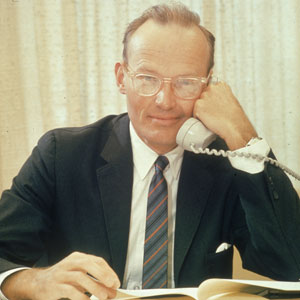
Once again, relying on the official record serves to confirm these conclusions. Note what the purpose of the Honolulu Conference was, as stated in the JOINT STATE / DEFENSE Department Cable, reproduced below. It is dated November 13th 1963. It directs the participants as to the topics that were to be discussed at the conference. It does NOT indicate discussions of any reversal or modification of JFK’s Vietnam withdrawal policy, quite the contrary. The part of the cable discussing the military (item 2) refers to implementation of the recommendations contained in the McNamara-Taylor Report. If you recall, the only part of the McNamara-Taylor Report that the President approved concerning US military policy is the section incorporated by direct reference in his National Security Action Memorandum Number 263 which called for the withdrawal of the bulk of all US Personnel by the end of 1965. See my Introduction to NSAM 263
Therefore, the author(s) of the DRAFT of NSAM 273 either: 1) disregarded the content of the actual discussions from the Honolulu Conference—assuming the discussions were consistent with JFK’s withdrawal policy—and falsely represented them in this draft, or… 2) perhaps this document is the product of discussions that were conducted in a manner inconsistent with JFK’s Vietnam withdrawal policy.
We may never know which way this went, but it can’t be both ways. However, either scenario indicates foreknowledge. In the first case, foreknowledge by the majority of attendees. In the second case, foreknowledge by only a few of them—perhaps only one. If the document accurately indicates the nature of the discussions in Honolulu, it implicates more of the attendees. However, if the DRAFT was based on discussions whose content is fictitious, then only a few attendees necessarily had foreknowledge of the assassination that would take place less than 24 hours after McGeorge Bundy’s signature appears at the bottom. At the absolute very least: that one individual seems quite suspect.
Lyndon Johnson signed the final version of NSAM 273 on November 26th, 1963, just four days after the assassination and one day after the funeral.

Part Two: The Honolulu Conference Cable:
Although it’s true that there was a significant political change in South Vietnam as a result of the assassination of President Diem and his brother, which took place about 3 weeks after the signing of NSAM 263, there remains no evidence that the coup altered Kennedy’s withdrawal plan. The following CABLE was sent nearly 2 weeks AFTER the coup had occurred. It directs what the AGENDA of the Honolulu Conference would be, including discussions consistent with NSAM 263. Most notably, it says:
“(2) MILITARY, INCLUDING REPORT ON PROGRESS IN ACCOMPLISHMENT OF TASKS ASSIGNED AS A RESULT OF THE MCNAMARA, TAYLOR MISSION, AND OUTLINING PLANS FOR CONTROL OF INFILTRATION AND SPECIAL REQUIREMENTS OF THE DELTA CAMPAIGN.”
Again note that the ONLY portion of the McNamara-Taylor (Mission) Report that was approved by JFK was the part recommending a complete withdrawal of the bulk of all US personnel by the end of 1965. There is no indication in this cable that he had changed his mind or that he was re-considering his earlier decision–not even in light of the changed political situation in South Vietnam. That the conference spawned the DRAFT of NSAM 273 while JFK was still the POTUS remains a disturbing and inadequately addressed chapter in American History.
In order to appreciate the actual content of the November 20th Honolulu Conference itself one might consult the official record. Unfortunately, the STATE Department’s account also appears grossly lacking in relevant content.
After reviewing the The Foreign Relations of the United States 1961-63 Volume IV August – December 1963 documents referencing the memorandum from the Honolulu Conference of November 20th, 1963, I made the following observations:
Each and every instance where any mention is made of the then current US plan to withdraw from Vietnam by the end of 1965 (in other words, any reference to Kennedy’s NSAM 263 and/or the relevant section from the McNamara-Taylor Report) a conspicuous lack of notation exists. Moreover, (by my count) the withdrawal plan is mentioned ONLY thrice in the entire memorandum of the Honolulu Conference! On those three occasions, the bulk of the content of what was discussed is NOT included in the FRUS Volume, only that “it” was, in fact, discussed. Save for a few very brief paragraphs, we learn nothing from this so-called official record. Yet, many apparently less urgent aspects of our presence in Vietnam were discussed in depth and are included in the memorandum–in great detail.
For instance, the first of the three times “withdrawal” is mentioned, appears on page 610:
Finally, as regards all U.S. programs–military, economic, psychological–we should keep before us the goal of setting dates for phasing out U.S. activities and turning them over to the Vietnamese; and these dates,too,should be looked at again in the light of the new political situation. The date mentioned in the McNamara-Taylor statement of October 2 on U.S. military withdrawal had–and is still having–a tonic effect. We should set dates for USOM and USIS programs, too. We can always grant last-minute extensions if we think it wise to do so.
Then on page 618:
Item B 2–Prospects and measures proposed by Country Team for improved prosecution of the war under the new government (Military, including a report on progress in accomplishment of tasks assigned as a result of the McNamara-Taylor Mission, and outlining plans for control of infiltration and special requirements for the Delta Campaign).
The last paragraph of the entire memorandum reads thusly (page 624):
Here follows discussions of Item C 1, “Revision of Military Comprehensive Plan;” Item C 2, “Status Report of FY 64 MAP;” Item D, “Outline in terms of forces, timing and numbers involved, the projected program for reduction U.S. military forces by end FY 65;” and Item E, “Country Team suggestions for revision of current reports to develop a consolidated country team reporting system.”
National Security Action Memorandum Number 273
Yet, there is nothing recorded about the “discussion that here follows…” at all in the FRUS Volumes! The next entry in the FRUS is for 8:00am on the morning of November 22nd 1963, where Bundy is presiding over the Daily White House Staff meeting.
I find this significant for several reasons. Again, in the joint State – Defense Department Cable of November 13, 1963 regarding the agenda for the Honolulu Conference, among other things: the attendees were directed to discuss certain military matters, namely, the implementation of the items from the McNamara-Taylor Report that were APPROVED by the President (JFK), i.e., withdrawal by the end of 1965.
Yet, according to the FRUS Volume IV, out of approximately 16 PAGES that were published by STATE to memorialize the memorandum from the Honolulu Conference, only 3 small paragraphs were dedicated to what should have constituted the MAIN military discussion, as withdrawal would have been a huge logistical challenge needing immediate attention.
That the FRUS Volume fails to provide the content of the discussions that ostensibly led to McGeorge Bundy writing a DRAFT of a document that was in clear opposition to JFK’s policy is very troubling.
Honolulu Conference Cable:
EUW020
RR RUEPWW
DE RUEPCR 129 13/1958Z 1963 NOV 13
R 131957Z
FM DA
INFO WHITE HOUSE
PO 1707Z
FM OSD
TO CINCPAC
COMUSMACV
AMENB SAIGON
BT
DEF 944589 FROM OSD
THIS IS A JOINT STATE-DEFENSE MESSAGE
1. SECRETARY RUSK AND SECREARY MCNAMARA PLAN ONE-DAY CONFERENCE PACOM HQ 20 NOV 1963. THEY INVITE COMMENTS AMB LODGE ADM FELT AND GENERAL HARKINS ON FOLLOWING PROPOSED AGENDA:
A. COUNTRY TEAM REVIEW OF SITUATION:
(1) POLITICAL
(2) MILITARY
(3) ECONOMIC
(4) PROVINCE SUMMARIES
PRESENTATION NOTE: A (1), (2) AND (3) SHOULD HIGHLIGHT OVERALL SITUATION.
A (2) SHOULD INCLUDE A REVIEW OF STATISTICAL INDICATORS WITH INTERPRETATION AND NOTE OF TRENDS. UNDER A (4) LIST NAMES OF PROVINCES NI WHICH SITUATION IS NOT CRITICAL AND ABOUT WHICH NO MORE NEED BE SAID. FOR REMAINING PROVINCES, BRIEFLY SUMMARIZE THE POLITICAL, ECONOMIC, AND MILITARY SITUATION IN EACH PROVINCE.
B. PROSPECTS AND MEASURES PROPOSED BY COUNTRY TEAM, FOR IMPROVED PROSECUTION OF THE WAR UNDER THE NEW GOVERNMENT:
(1) POLITICAL, INCLUDING POSSIBILITY OF IMPROVED RELATIONS WITH NEIGHORING STATES.
(2) MILITARY, INCLUDING REPORT ON PROGRESS IN ACCOMPLISHMENT OF TASKS ASSIGNED AS A RESULT OF THE MCNAMARA, TAYLOR MISSION, AND OUTLINING PLANS FOR CONTROL OF INFILTRATION AND SPECIAL REQUIREMENTS OF THE DELTA CAMPAIGN.
(3) ECONOMIC, INCLUDING ANALYSIS OF GVN ECONOMY. MILITARY AND TOTAL BUDGET EXPENDITURES. MEASURES PROPOSED TO SOLVE GVN BUDGETARY PROBLEMS AND PROBLEMS OF US AID IN FY64 AND 65.
(4) STRATEGIC HAMLET PROGRAM – ASSESSMENT OF AND FURTHER REQUIREMENTS FOR THE PROGRAM.
C. STATUS REPORT ON FY64 MAP AND REVISION OF THE MILITARY COMPREHENSIVE PLAN AND ASSOCIATED COUNTRY TEAM PLANS.
D. OUTLINE IN TERMS OF FORCES, TIMING, AND NUMBER INVOLVED, THE PROJECTED PROGRAM FOR REDUCTION OF US MILITARY FORCES BY END OF CY 1965.
E. COUNTRY TEAM SUGGESTIONS FOR REVISION OF CURRENT REPORTS TO DEVELOP A CONSOLIDATED COUNTRY TEAM REPORTING SYSTEM AS A SUPPLEMENT TO THE ESSENTIUAL INDIVIDUAL POLITICAL, MILITARY, AND ECONOMIC REPORTS. REPORTING SHOULD BE DESIGNED SPECIFICALLY TO IDENTIFY THE OVER-ALL COUNTERINSURGENCY OBJECTIVES AND TO MEASURE PROGRESS TOWARD THEIR ATTAINMENT.
F. CAS-MACV RELATIONSHIPS:
(1) PLANS FOR REDUCTION IN NUMBER AND COMPLEXITY OF IRREGULAR FORCES, AND FOR THE ABSORPTION OF THEIR FUNCTIONS INTO THE REGULAR MILITARY STRUCTURE.
(2) RESPONSIBILITY FOR COMBAT INTELLIGENCE TEAMS AND FOR CONDUCT OPERATIONS IN NORTH VIETNAM AND LAOS.
(3) CURRENT STATUS OF TRANSFER BORDER SURVEILLANCE TEAMS.
(4) REVIEW OF FUNDING REQUIREMENTS AND ARRANGEMENTS.
2. TENTATIVE TRAVEL ARRANGEMENT AND LIST OF PARTY. WASHINGTON PARTY WILL DEPART ANDREWS AFB IN TWO PLANES. FIRST PLANE DEPARTS 1630 WASHINGTON TIME, 19 NOV. ARRIVES HICKAM 2200 WITH FOLLOWING PASSENGERS: SECRETARY MCNAMARA, GENERAL TAYLOR, ASD (PA) A. SYLVESTER, DASD (ISA) W. BUNDY, AID ASST. S. JANOW, VADM RILEY, MGEN V. KRULAK, DIR SEA AFFAIRS H. KOREN, COL J. KENT AND LCOL S BERRY CWO PROCTOR.
SECOND PLANE PARTS 0030 WASHINGTON TIME, 20 NOV, ARRIVES HICKAM 0600 WITH FOLLOWING PASSENGERS: SECRETARY RUSK, AID ADMINISTRATOR D. BELL, SPEC ASST MCGEORGE BUNDY, PRESS SECRETARY P. SALINGER, ASST SECR. HILSMAN, ASST SECR. MANNING, MR M. FORRESTAL, SPEC ASST E. LITTLE, OIC VN AFFAIRS P. KATTENBURG, MRS ROTHE AND A STATE SECURITY OFFICER.
DIRECTOR OF CIA J. MCCONE WILL ARRIVE COMMERCIAL AIRCRAFT.
THOSE RETURNING TO WASHINGTON WILL DEPART HONOLULU IMMEDIATELY FOLLOWING CONCLUSION CONFERENCE. SECRETARY RUSH AND NSC PARTY WILL DEPART HONOLULU AT 0820, 22 NOVEMBER FOR ONWARD FLIGHT TO JAPAN.
3. VIP KIT EQUIPPED C-135 WILL BE MADE AVAILABLE FOR AMB LODGE AND GEN HARKINS. PLANE SEATS 12 WITH BERTHS FOR 11. WHEN SHOULD IT BE IN PLACE? INDICATE ETA HAWAII. FLIGHT TIME SAIGON-HONOLULU IS 12 HOURS.
4. SECRETARY RUSK, SECRETARY MCNAMARA AND GENERAL TAYLOR DESIRE 30-MINUTE CONFERENCE WITH AMB LODGE, ADM FELT, AND GEN HARKINS PRIOR TO FORMAL SESSION.
GRP4
BT
[HANDWRITTEN CORRECTIONS ON COPY OF ACTUAL CABLE: NOTE SECOND PLANE DEPARTURE FROM WASHINGTON AT 0200 INSTEAD OF 0030, AND ARRIVAL AT HICKAM 0730 INSTEAD OF 0600.]
SOURCE: JFK Library JFK National Security Files 1961-1963, Box 202 Country Files: Vietnam, Vol XXIV, 6-15 November, 1963 Defense Cables

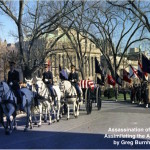
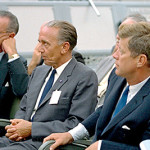
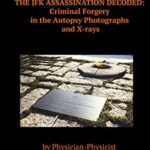
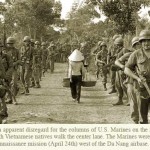
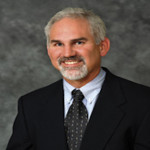
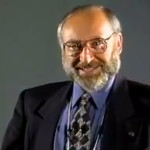
After reading Greg Burnham’s analysis of NSAM 273 and after listening to Greg Burnham’s radio interview with noted Internet researcher Len Osanic on the same subject I am convinced Greg Burnham has located the primary Achilles Heel of the JFK assassination. Many feel the NSAM draft signed by McGeorge Bundy the day before JFK was ambushed & murdered in Dallas was more than adequate fuel for formation of a Grand Jury that never was assembled after the Dallas Presidential ambush. Greg’s analysis begs the question what President the draft was written for? Those with more liberal opinions will also appreciate Greg’s support of Zapruder film alteration & other topics considered by some websites as ‘too hot to handle’.
Beware of the disinformation sharks circling your website, Greg! Please don’t allow them access to bite you. KUTGW
Many thanks for the kind words, Thomas. When I spoke at COPA last year for the 50th anniversary my topic was titled: “A Revolution of Mind” in part because I believe that people are somewhat voluntarily asleep at the wheel. Because the Founding Fathers framed our Republic so well by carefully choosing select words for the Constitution, particularly those in the Bill of Rights, many Americans falsely believe that somehow their liberty is insured by the very same federal government that the Constitution was written to protect us against. The Constitution provides for Freedom of the Press. It does not however provide for a means to keep that press free. For whenever the federal government is tasked with policing itself, perfidy is insured. If there were federal laws passed regulating the press in order to “keep it honest” –well, the problem is obvious in its circularity. So how do we keep ourselves informed, not only about the threats to our “national security”, but also about threats to our personal as well as collective liberty that result from a federal government that is allowed to decide for “The Governed” what information, history, or truth the American People can handle? We must be “the watchdogs of the watchdogs”. The press is no longer free. If as Americans we wish to regain our liberty we must first awaken from our slumber.
“Extra! Extra! Read all about it America: The information is there. The bulk of it is accessible. The truth will out.”